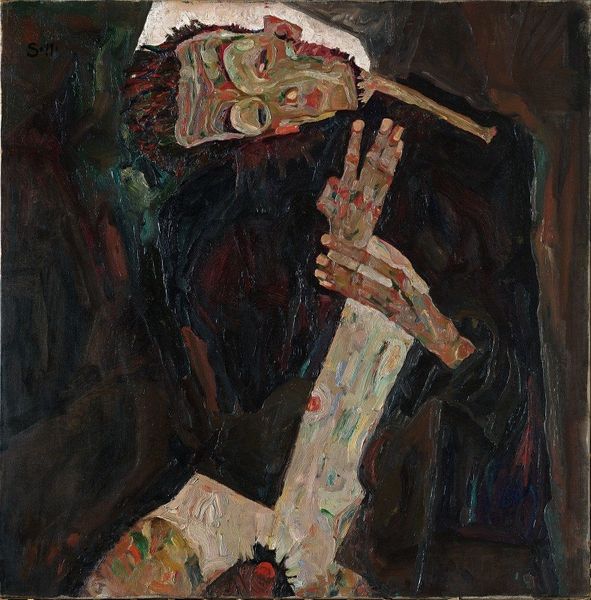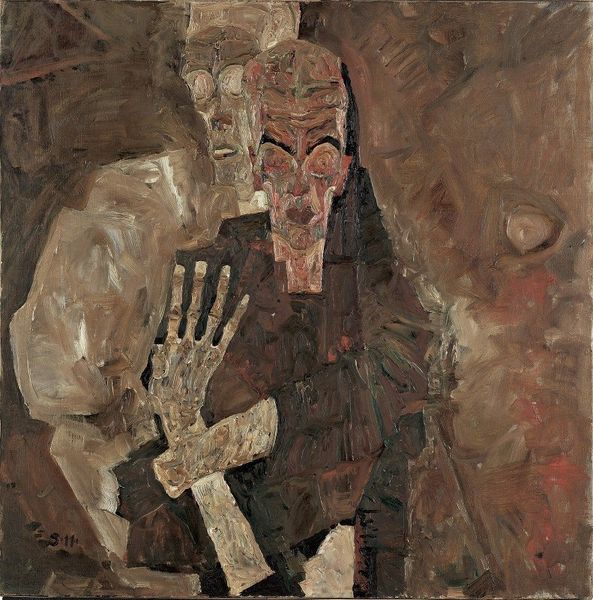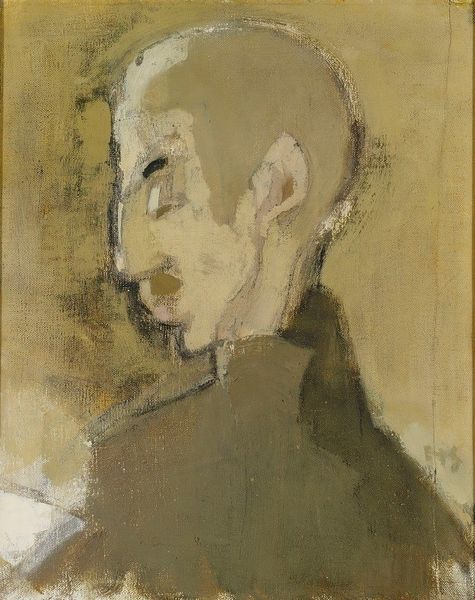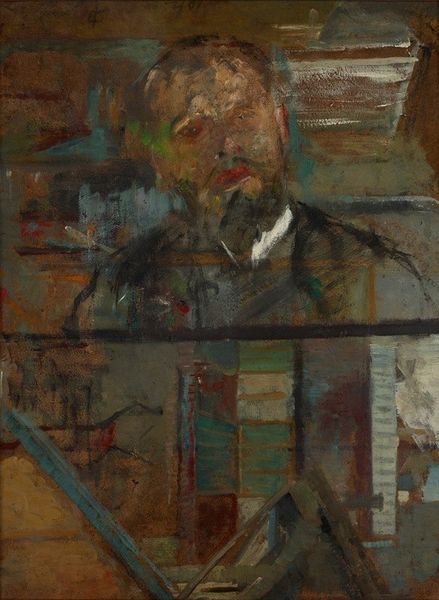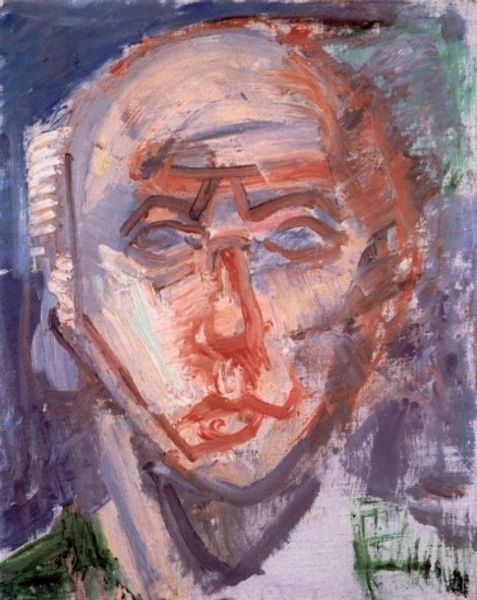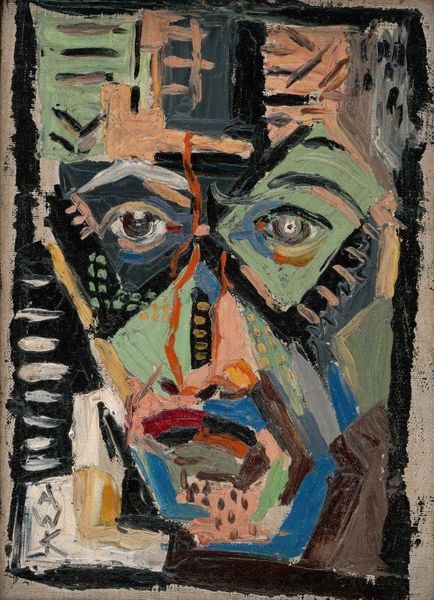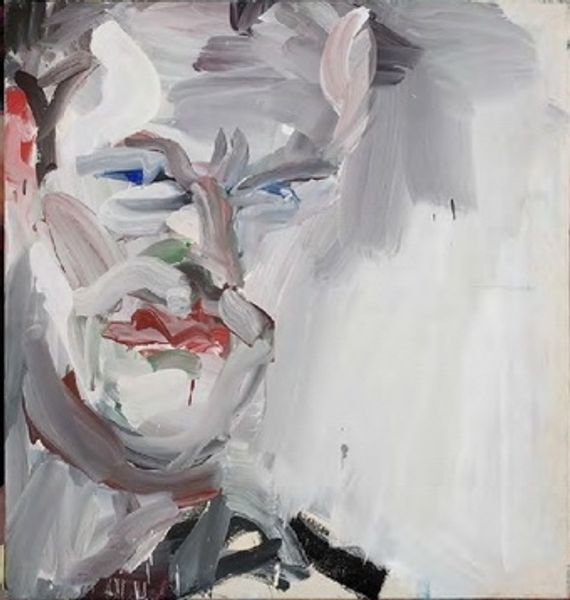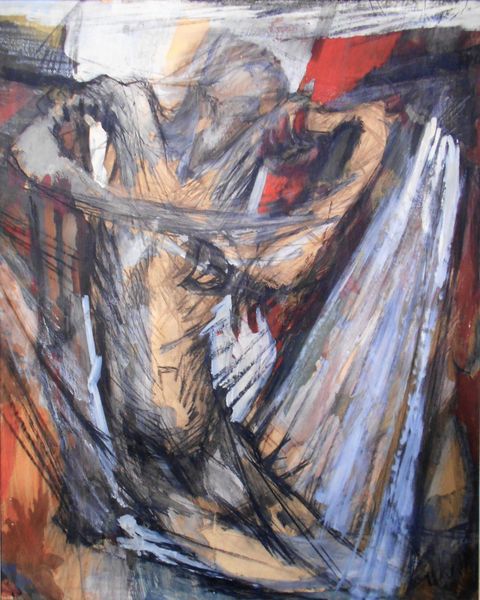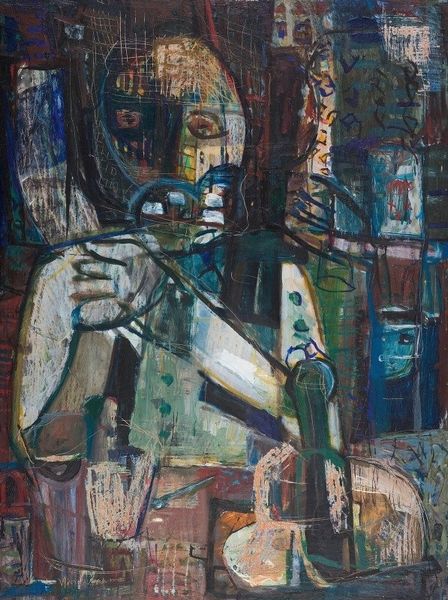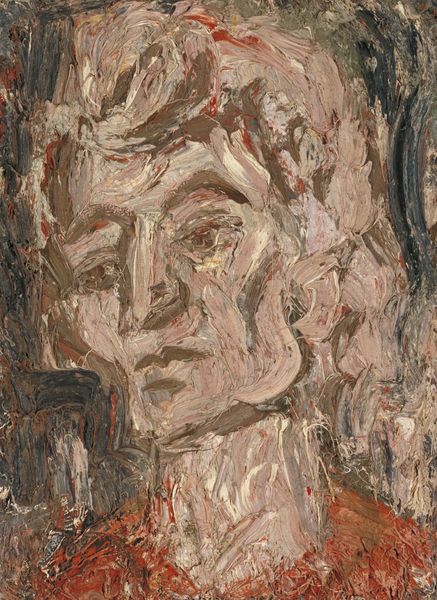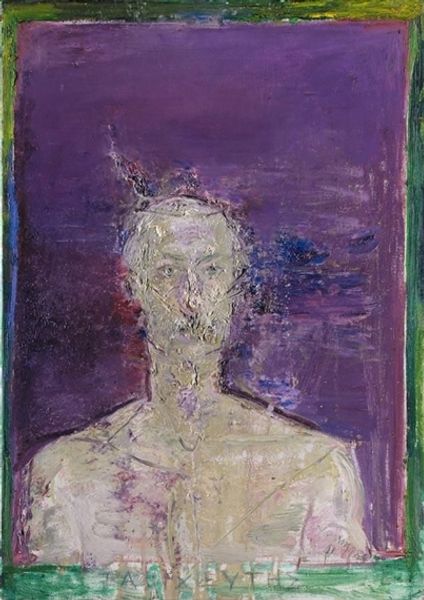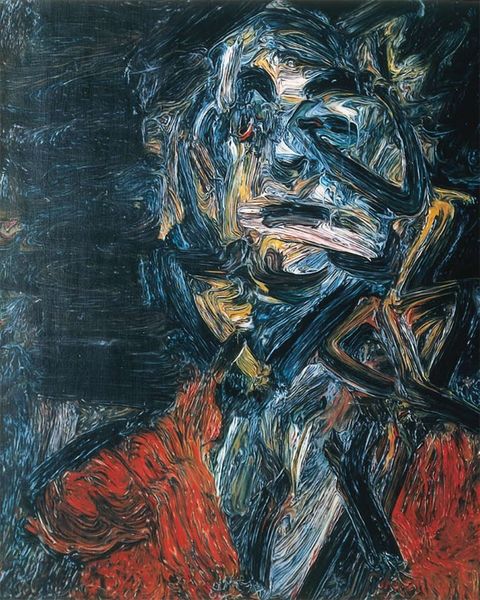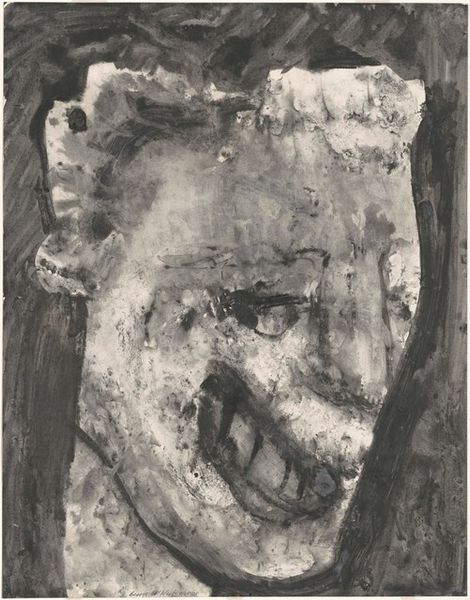
Dimensions: image: 483 x 318 mm
Copyright: © Tate | CC-BY-NC-ND 4.0 DEED, Photo: Tate
Editor: This is Elisabeth Collins' painting "The Prince of Aquitaine," currently at the Tate. The blocky brushstrokes give the prince a kind of haunting, fragmented presence. What do you see in its formal construction? Curator: The artist employs a restricted palette, predominantly greens and browns, which creates a sense of enclosure. Note how the angularity of the facial features is echoed in the hat and collar; what effect does that create for you? Editor: It feels very deliberate, a structural reinforcement of the subject's character. I also see how the paint application seems almost sculptural. Curator: Precisely. Consider how the impasto technique emphasizes the materiality of the paint itself, drawing our attention to the constructed nature of the image. Editor: It's fascinating how the formal elements contribute to such a complex representation. Curator: Indeed. By focusing on these intrinsic qualities, we gain a deeper appreciation for Collins' artistic vision.
Comments
tate 7 months ago
⋮
http://www.tate.org.uk/art/artworks/collins-the-prince-of-aquitaine-t07196
Join the conversation
Join millions of artists and users on Artera today and experience the ultimate creative platform.
tate 7 months ago
⋮
This painting was one of relatively few produced in the middle of Collins's career. It was made while she was staying alone at Cagnes-sur-Mer in the South of France. The melancholic Prince of Aquitaine is a fictional character who appears in Gerard de Nerval's poem El Desichado and reappears at the end of TS Eliot's The Wasteland. Here, Collins paints the prince's features and downward gaze with long loose brushstrokes which accentuate his elongated face and solemn expression. De Nerval described this character as, 'the shadowy one - the widower - the unconsoled/ The prince of Aquitaine whose tower has been destroyed'. Gallery label, September 2018
